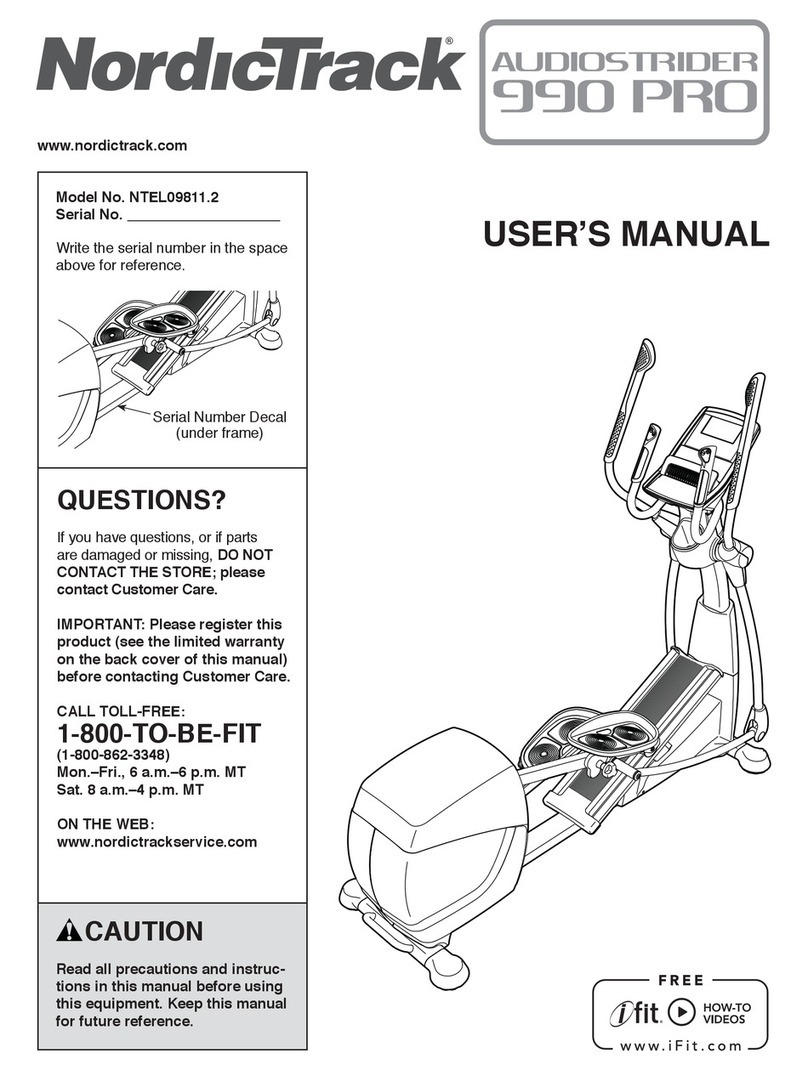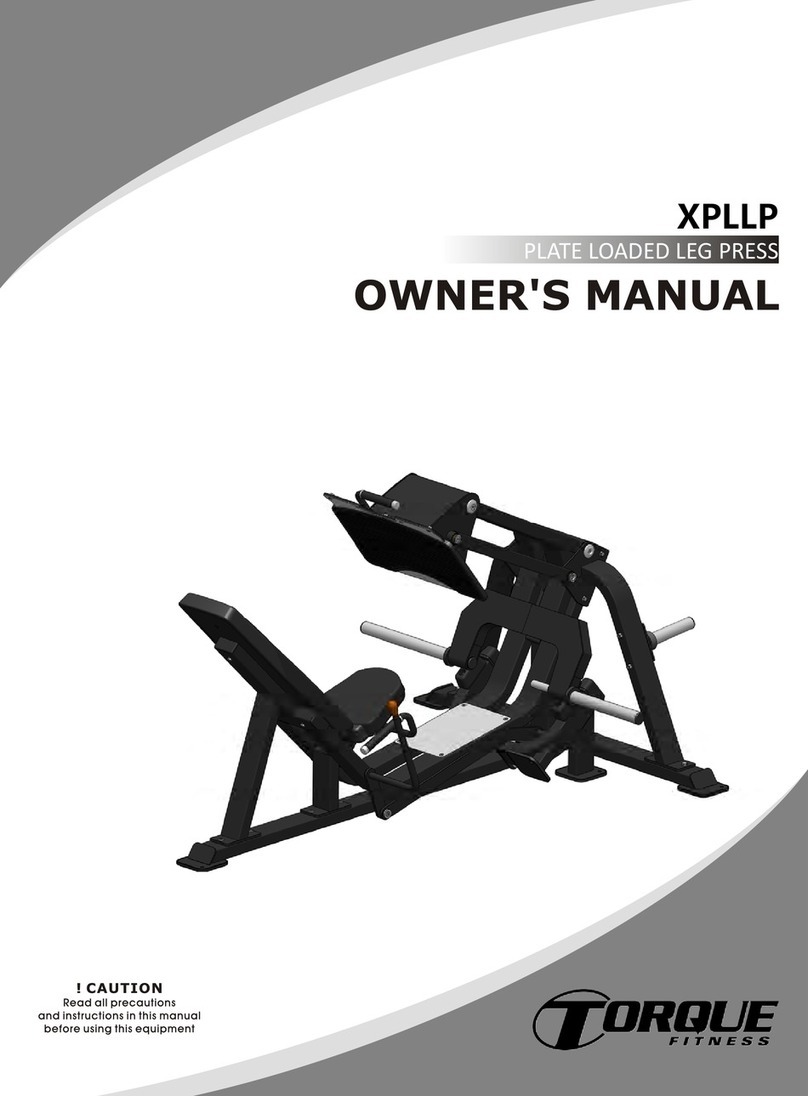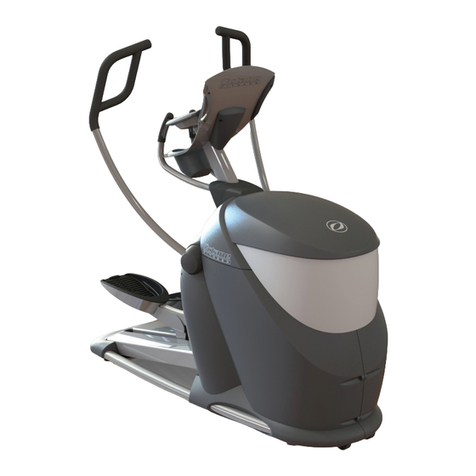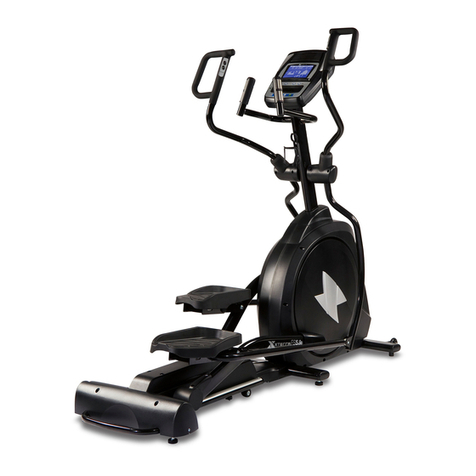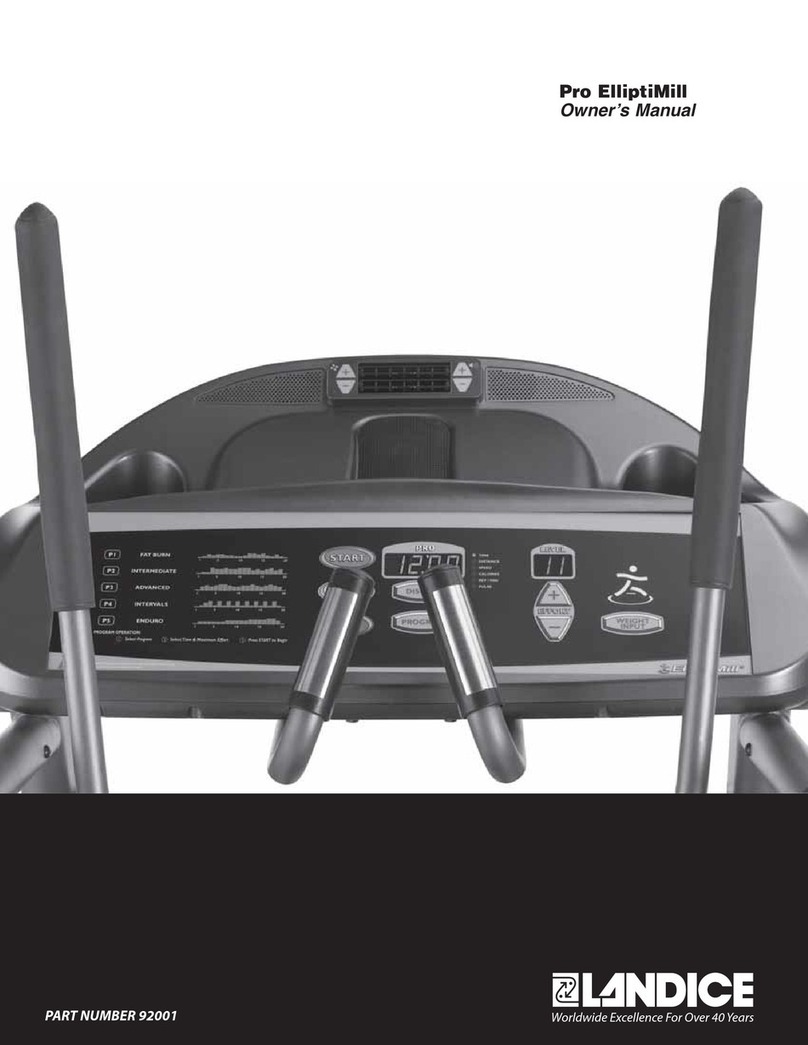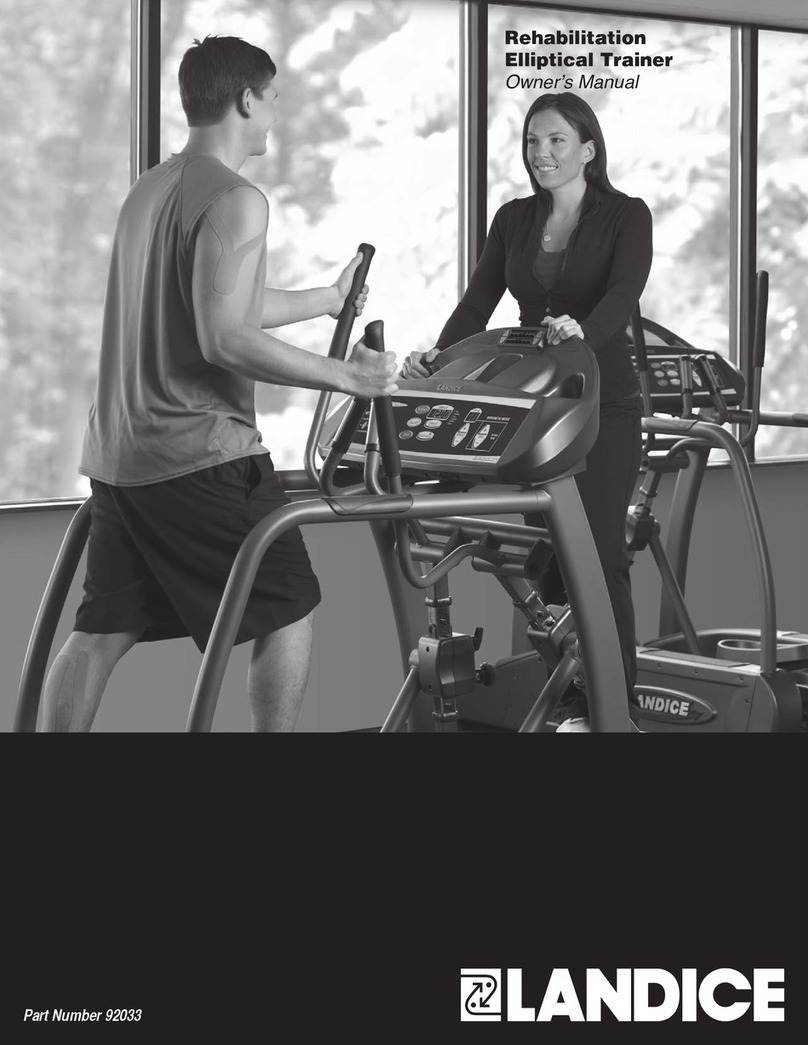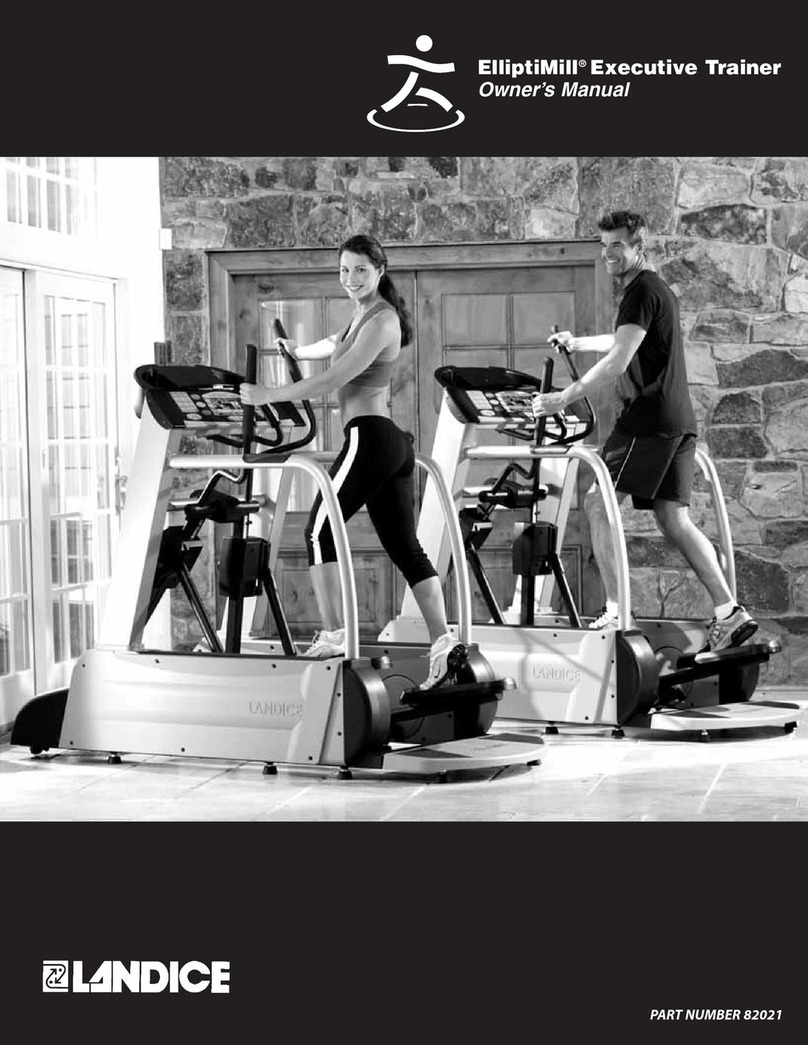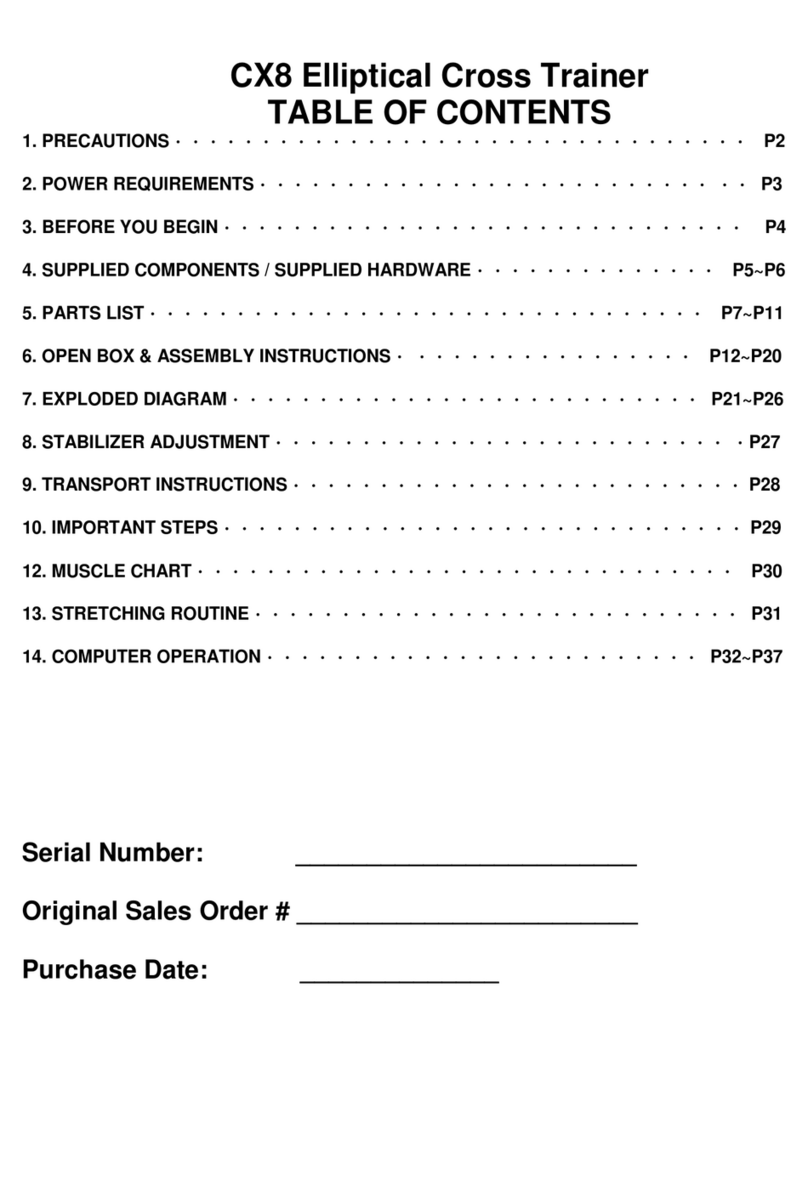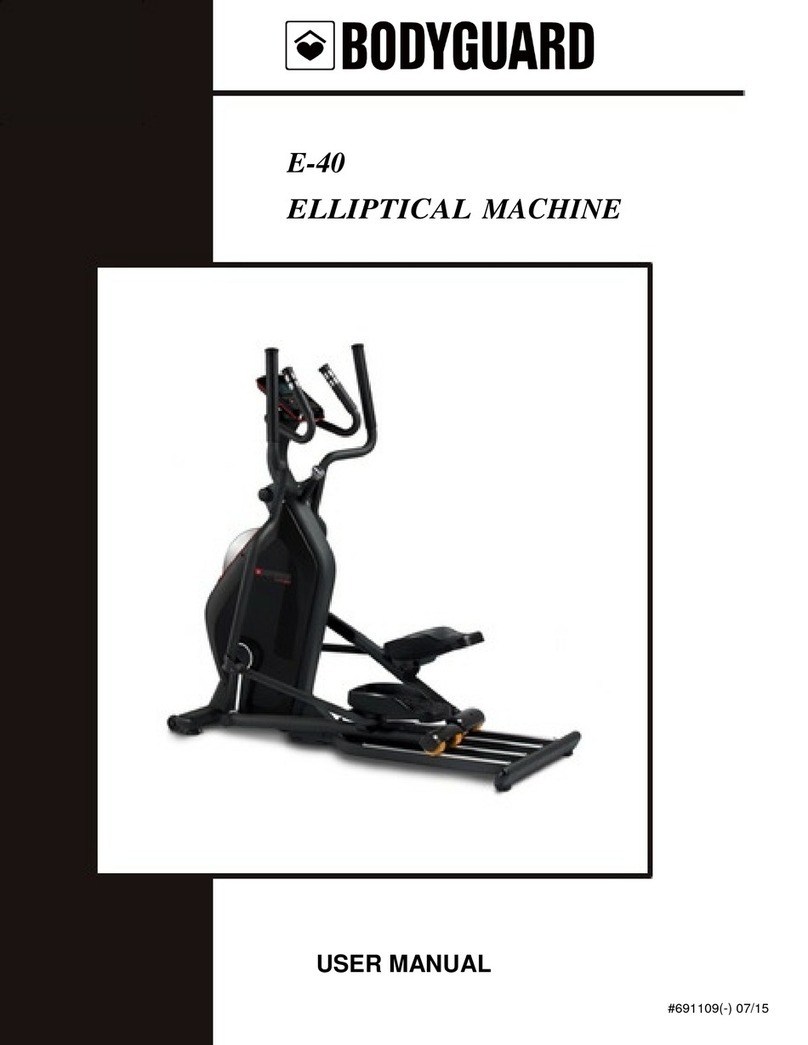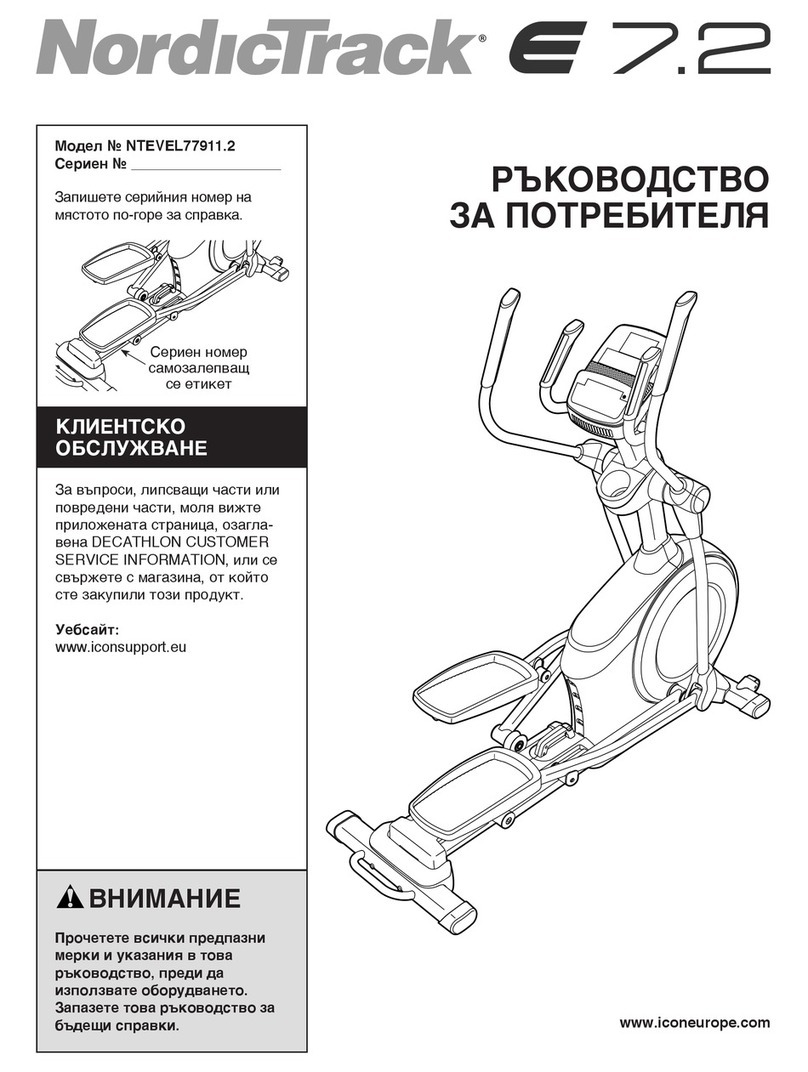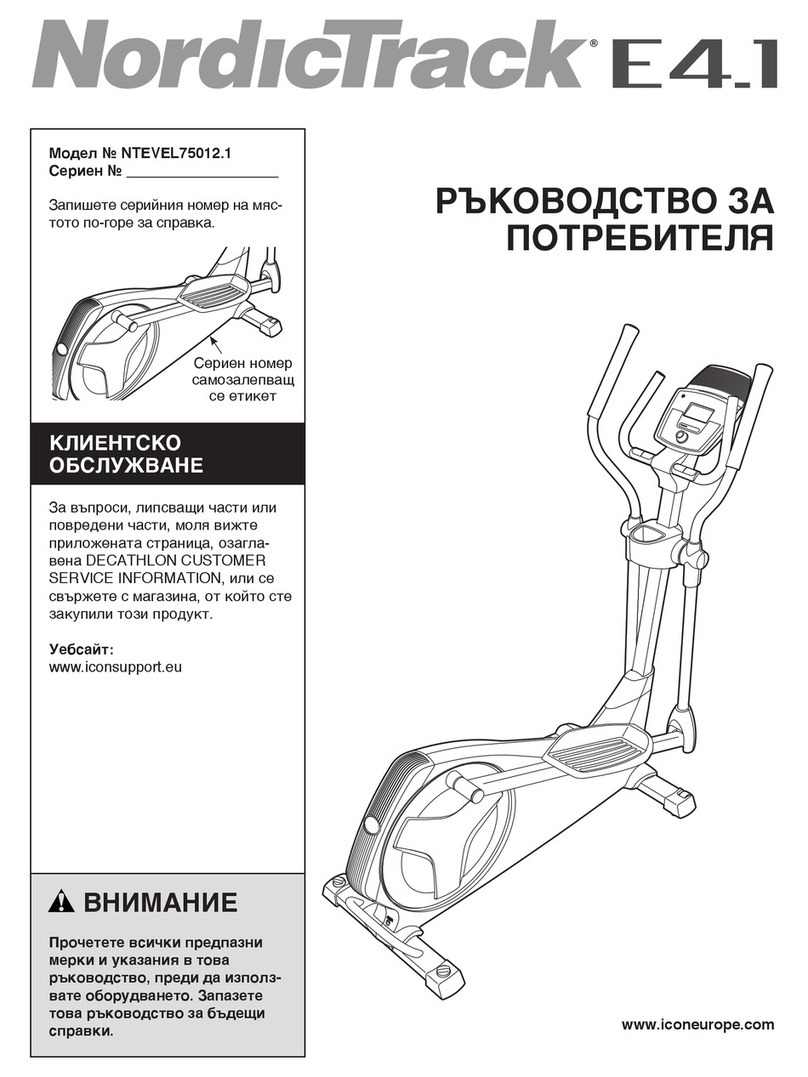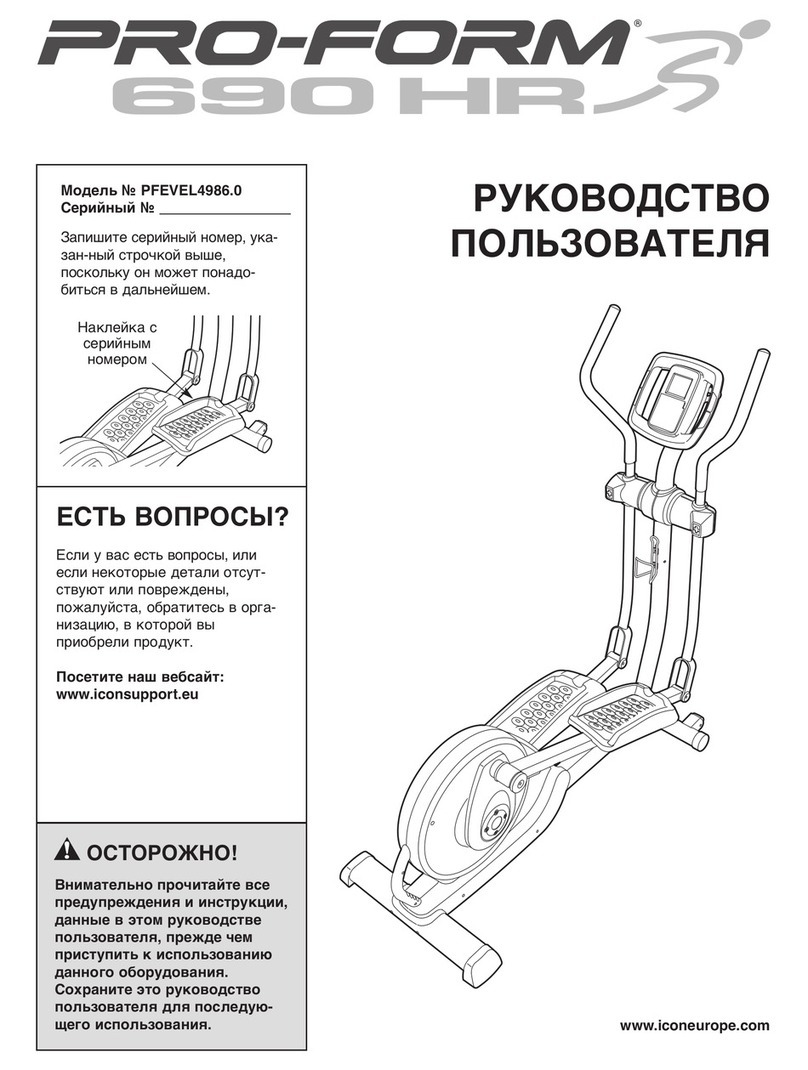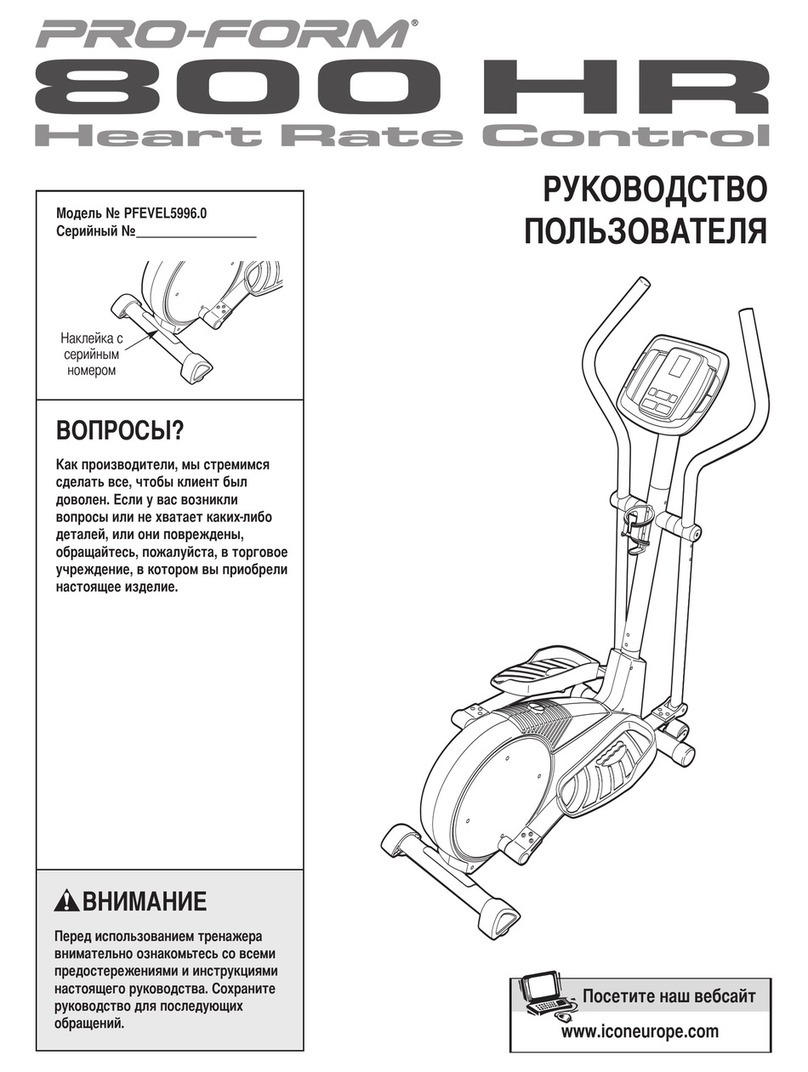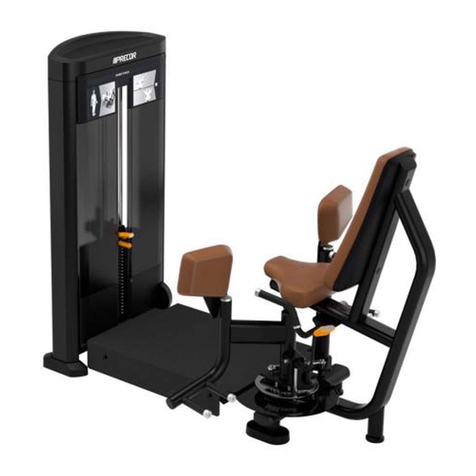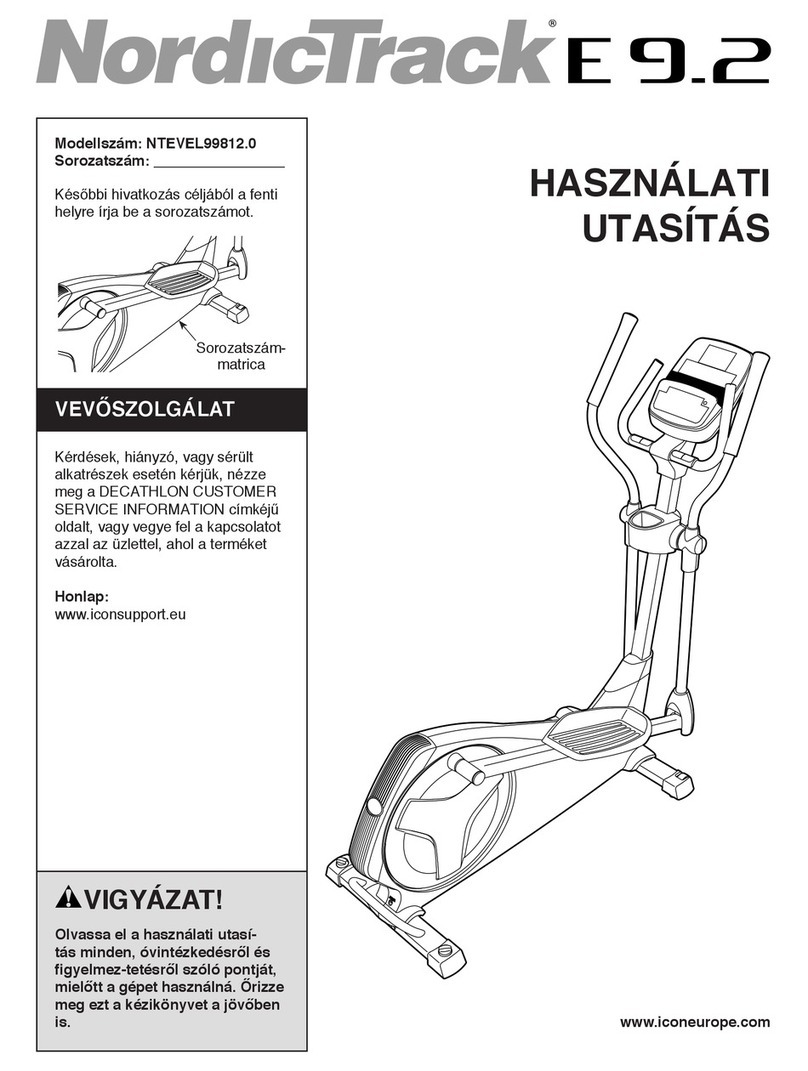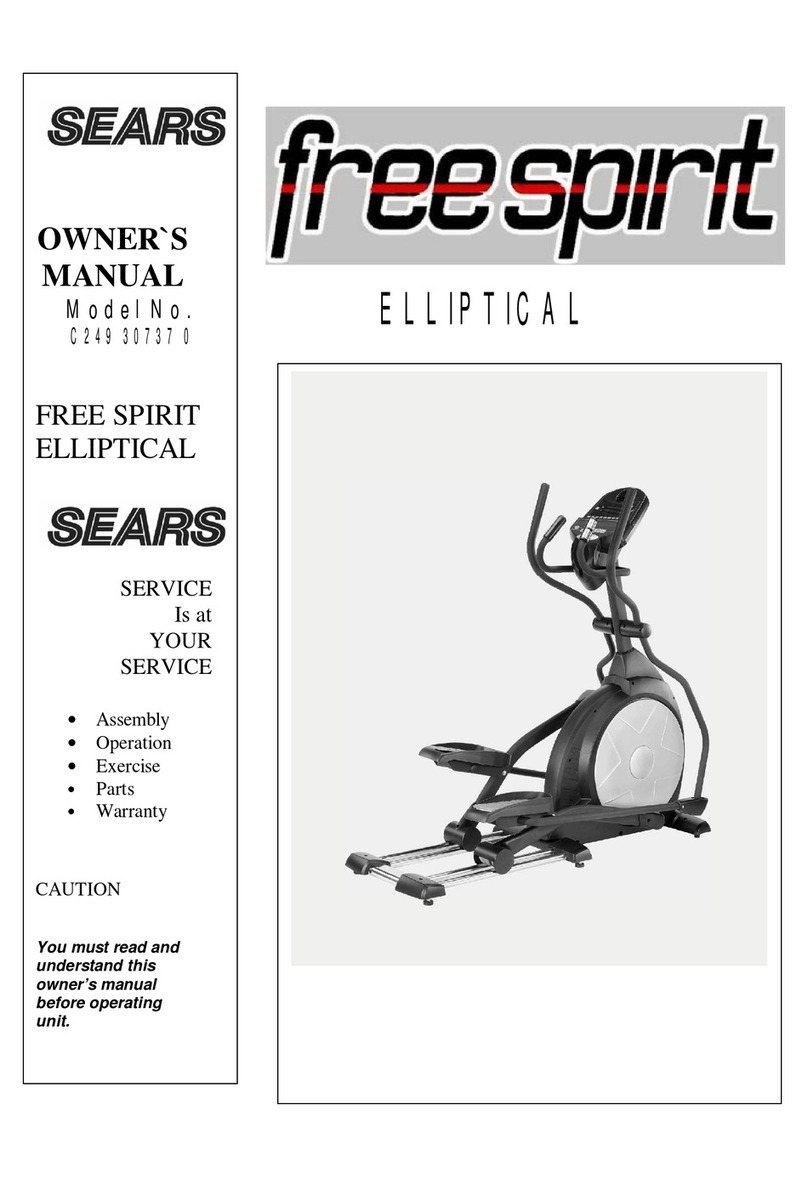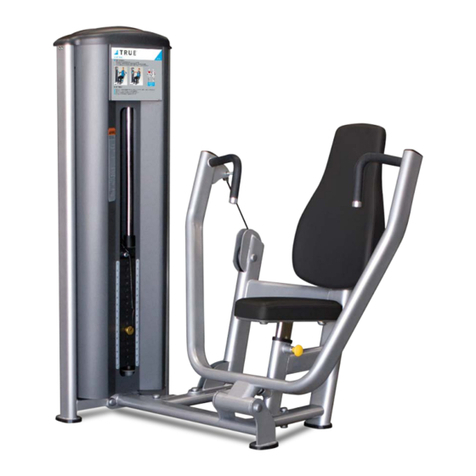Contents
7
Contents
Important Safety Instructions ................................................................2
Grounding Instructions ..........................................................................4
Elliptical Quick Start Guide....................................................................5
Using the Control Panel ..................................................................5
Switching English/Metric Display Units ...........................................6
1. Introduction ............................................................................................9
1.1. Before You Begin ........................................................................... 9
1.2. Heart Rate Monitoring .................................................................. 11
1.2.1. What is exercise intensity?.............................................. 11
1.2.2. What is maximum heart rate? ......................................... 11
1.2.3. Why should I monitor exercise intensity? ........................ 12
1.2.4. How do I determine my Target Heart Rate Zone? .......... 13
1.3. Heart Rate Monitors ..................................................................... 14
1.3.1. Wireless Chest Strap Monitoring System........................ 14
1.3.2. Contact Heart Rate Monitoring System........................... 15
1.4. Cardio Elliptical Program Capabilities .......................................... 16
2. Installation ............................................................................................17
2.1. Tools Required ............................................................................. 17
2.2. Unpacking .................................................................................... 17
2.3. Assembly...................................................................................... 18
3. Elliptical Operation .............................................................................31
3.1. Control Panel................................................................................ 31
3.2. Display Features .......................................................................... 33
3.3. Using the Cardio Elliptical ............................................................ 35
3.3.1. Client Mode on Residential Models Only ........................ 35
3.3.2. Using the Elliptical ........................................................... 36
3.4. Using the Built-in Programs.......................................................... 36
3.4.1. Description ...................................................................... 36
3.4.2. Running a Built-In Program ............................................. 38
3.5. User Programs ............................................................................. 39
3.5.1. User Program .................................................................. 39
3.5.2. Edit Mode ........................................................................ 40
3.5.3. Learn Mode ..................................................................... 41
3.6. Specific Goal Programs................................................................ 41
3.7. Heart Rate Control Programs....................................................... 42
3.7.1. Built-in HRC Programs .................................................... 43
3.7.2. User-Defined Heart Rate Programs ................................ 44
